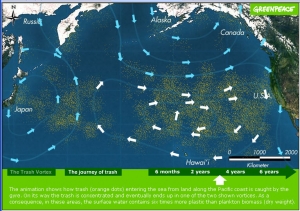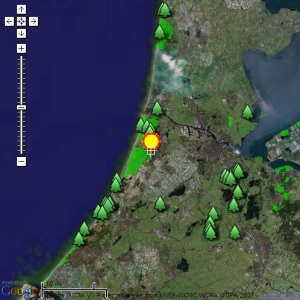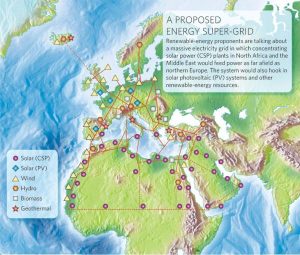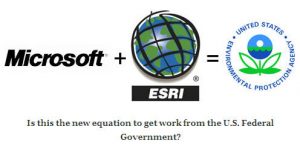Trash Vortex and Greenpeace
Not news, but news to me is the ominous “trash vortex” illustrated in this Greenpeace animation. According to the United Nations Environmental Program (UNEP) 2006 report on Ecosystems and Biodiversity in Deep Waters (PDF), there are 46,000 pieces of marine litter for every square mile of ocean.
An amazing film, Garbage Island, presented in short segments on VBS, features Charles Moore, discoverer of the trash vortex, and founder of the Algalita Marine Research Foundation, and enlightening explanations by Prof. Frederick vom Saal.
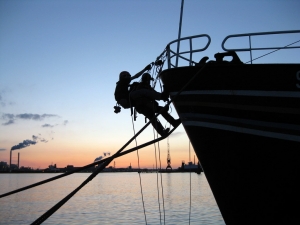 Earlier this summer, somewhere in Amsterdam, I happened upon some Greenpeace volunteers who were apparently training to board ships. It didn’t seem to be a covert operation, but not too many people were passing by that evening when I took this photo.
Earlier this summer, somewhere in Amsterdam, I happened upon some Greenpeace volunteers who were apparently training to board ships. It didn’t seem to be a covert operation, but not too many people were passing by that evening when I took this photo.
Update: 2017-2018: Article in New Replubic with history and current Trash Vortex news. ABC news report, March 2018. And latest estimates of size of trash island in Nature.
See also: The Ocean Cleanup Foundation website.

